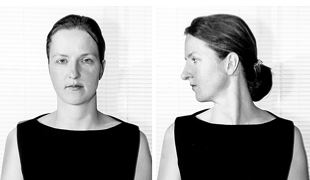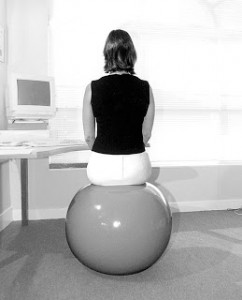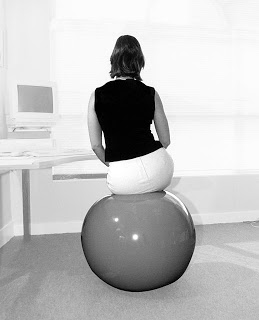The following set of neck stretches will help you relax you neck muscles. They will also mobilize your neck. Moving your back and neck reduces the adverse effects of inactivity through prolonged sitting. The neck stretches and the exercises in our active sitting program mobilize your joints, strengthen your musculature, stretch tight and tense muscles and increase your overall level of energy. The exercises are easily done and can be repeated frequently during the day. The more you engage in the simple routine the less likely you will suffer from the effects of continuous inactivity.
Spinal movements should be unilateral, the movement should only take place in one direction. We should for example avoid twisting and bending the spine at the same time. This applies to exercises as well as daily movements. Exercises or movements to ‘loosen up’ such as rolling the head can cause damage rather than being helpful and should be completely avoided. Be sure to review the general guidelines which apply to neck stretches as well as all the other exercises you will find on this site.
Spinal movements should also avoid hyper-extension of the back, you should not curve the back backwards. Again, some exercises such as dropping the head back should therefore be avoided.
When exercising on the ball, sit upright and allow the spine to be in its natural curve and in good alignment. Breath normally during all neck stretches. Tighten the muscles in your stomach (simply pull your stomach in) as the musculature supports the lower back, stabilizes the hip and makes the exercise more effective. Hold on to the edge of the table or rest your wrists on the edge of the table, unless instructed otherwise.
EXERCISES FOR THE NECK & SHOULDERS:
Pigeon

1. Push the head forward, as far as possible, while keeping the shoulders back.
2. Pull the head back, keeping the chin down. Hold your head in this double chin position, then push it forward again.
• Repeat exercise 3 to 5 times
The above is a mobility exercise to improve joint functionality. To use it as one of our neck stretches
1. push the head forward as before.
2. Then pull the head back and down again and hold this position for about 10 seconds, feeling a stretch in the back of the head and neck. • Repeat stretch 3 times
Head Turn

1. Keeping the shoulders straight and still and rest your hands in your lap.
2. Turn your head as far as possible, looking over your shoulder. Repeat on the other side. Compare the two sides and see if you have equal mobility when turning your head.
• Repeat 3 to 5 times
You will find Part III of the Active Sitting Program and more neck stretches in the next post.









